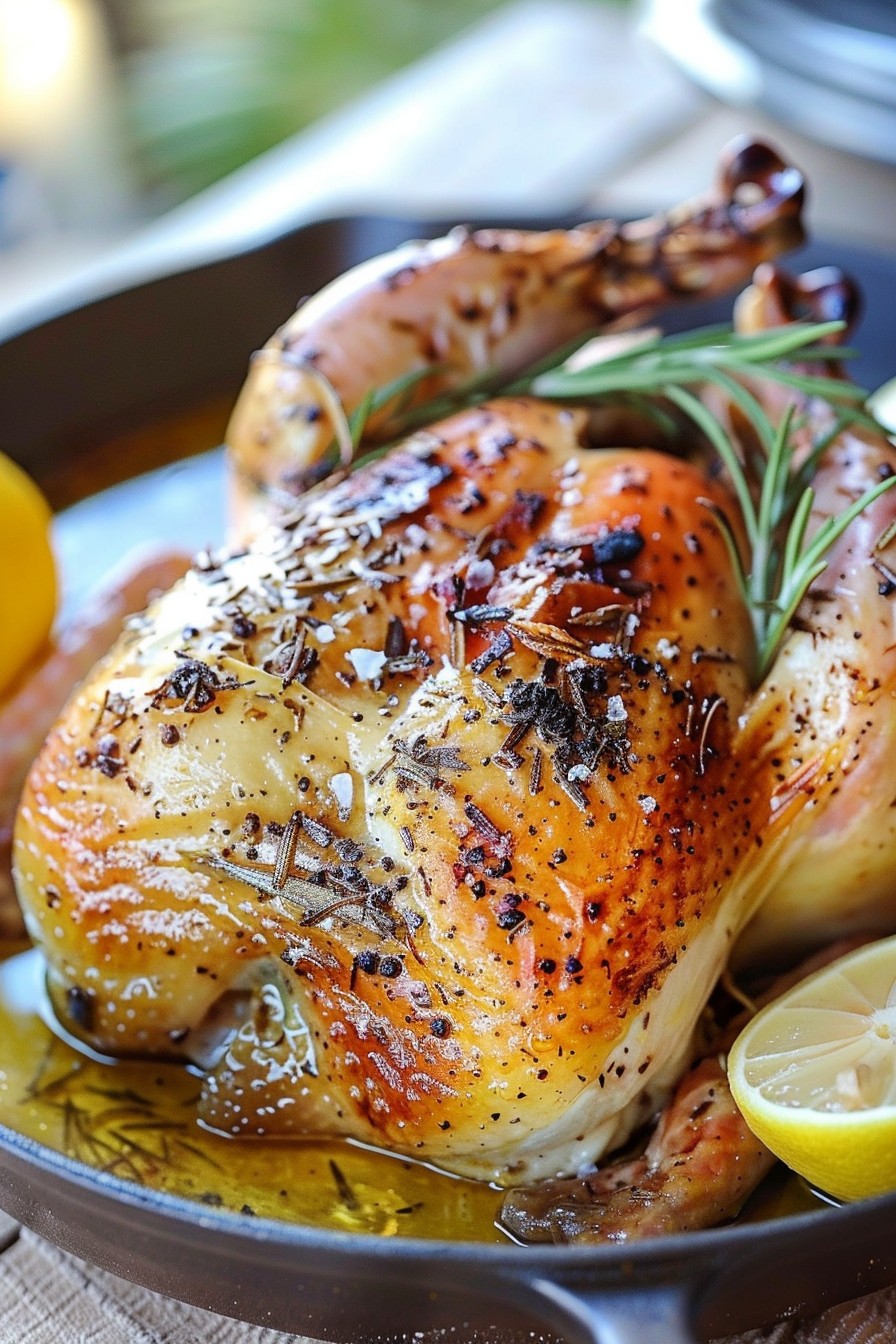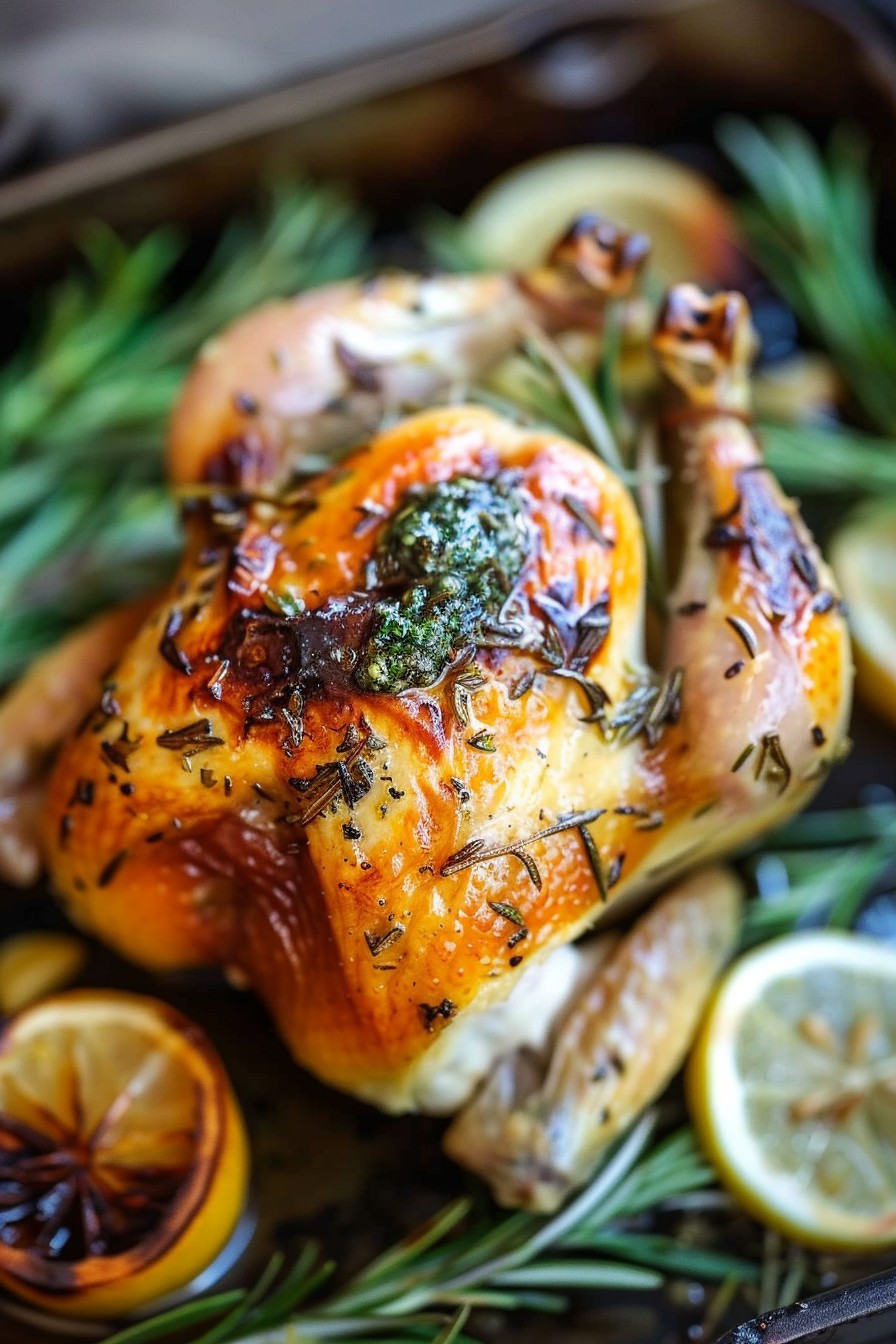Zesty and juicy, Cornish hens are the perfect centerpiece for a dinner that feels fancy without the fuss. Whether you’re a roasting rookie or a poultry pro, the debate on how to cook these petite birds—breast up or down—is one we’re settling today with science, sass, and a sprinkle of seasoning.
Why This Recipe Works
- Roasting breast down first protects the delicate white meat from drying out, ensuring juicy, tender bites.
- Flipping the hens breast up for the final roast gives the skin a chance to crisp up to golden perfection.
- Using a high-temperature start then lowering the heat cooks the hens evenly without burning the exterior.
- Seasoning under the skin as well as on top infuses the meat with flavor from the inside out.
- Resting the hens before serving allows the juices to redistribute, making every mouthful moist and delicious.
Ingredients
- 2 Cornish hens, about 1.5 lbs each
- 2 tbsp olive oil
- 1 tsp salt
- 1/2 tsp black pepper
- 1 tsp garlic powder
- 1 tsp paprika
- 1/2 tsp dried thyme
- 1 lemon, halved
- 2 sprigs fresh rosemary
Equipment Needed
- Roasting pan
- Meat thermometer
- Kitchen twine (optional)
- Basting brush
Instructions

Prep the Hens
Preheat your oven to 450°F. Pat the Cornish hens dry with paper towels to ensure crispy skin. Mix the salt, pepper, garlic powder, paprika, and thyme in a small bowl. Gently loosen the skin over the breasts and thighs with your fingers, then rub half of the seasoning mix underneath the skin. Rub the remaining seasoning all over the outside of the hens. Stuff each hen with a lemon half and a sprig of rosemary. Tie the legs together with kitchen twine if desired.
Start Breast Down
Place the hens breast side down in a roasting pan. Drizzle with olive oil. Roast in the preheated oven for 20 minutes. This initial high heat helps to seal in the juices while protecting the breast meat from drying out.
Flip and Finish
After 20 minutes, carefully flip the hens so they are breast side up. Reduce the oven temperature to 350°F and continue roasting for another 25-30 minutes, or until a meat thermometer inserted into the thickest part of the thigh reads 165°F. Baste the hens with pan juices halfway through for extra flavor and moisture.
Rest Before Serving
Once cooked, remove the hens from the oven and let them rest for 10 minutes before carving. This allows the juices to settle, ensuring moist meat. Serve with your favorite sides and enjoy the fruits of your labor.
Tips and Tricks
For an even crispier skin, pat the hens dry again before seasoning and consider leaving them uncovered in the fridge for a few hours before cooking. If you’re short on time, you can skip the trussing, but it does help the hens cook more evenly. Always use a meat thermometer to avoid under or overcooking. Letting the hens come to room temperature for about 20 minutes before roasting can help them cook more evenly. Finally, don’t skip the resting step—it’s crucial for juicy meat.
Recipe Variations
- For a citrusy twist, replace the lemon with orange halves and add a pinch of cinnamon to the seasoning mix.
- Spice lovers can add cayenne pepper or chili powder to the rub for a kick.
- Herb variations include using sage or tarragon in place of rosemary for a different flavor profile.
- For a smoky flavor, add a teaspoon of smoked paprika to the seasoning mix.
- Vegetable lovers can roast carrots, potatoes, and onions in the pan around the hens for a one-pan meal.
Frequently Asked Questions
Can I cook Cornish hens from frozen?
It’s best to thaw the hens completely in the fridge before cooking to ensure even cooking. Cooking from frozen can result in unevenly cooked meat, with some parts overcooked and others undercooked.
How do I know when the hens are done?
The safest way is to use a meat thermometer. The internal temperature should reach 165°F in the thickest part of the thigh, not touching the bone. The juices should also run clear when pierced.
Can I use this method for larger chickens?
While the principle of protecting the breast meat applies, larger chickens will require longer cooking times. Adjust the roasting time accordingly and always use a meat thermometer to check for doneness.
Summary
Mastering Cornish hens is all about the technique—starting breast down to protect the white meat, then flipping to crisp the skin. With the right seasoning and a little patience, you’ll have a dish that’s as delicious as it is impressive.
